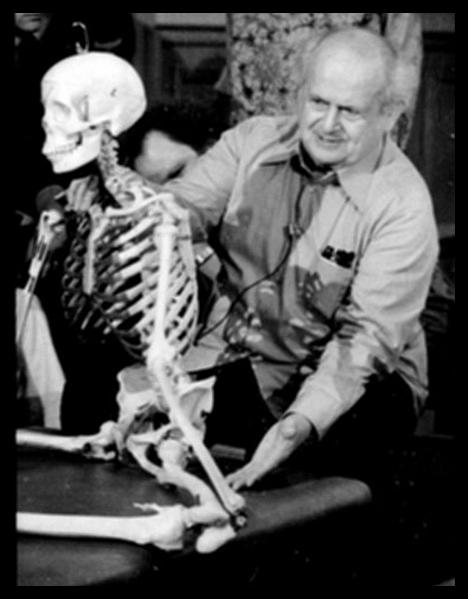Several times in the last week, the subject of change has come up.
We all come to the Feldenkrais Method® because there’s something we want to change about ourselves.
Maybe it’s an ongoing problem—I had shoulder and neck spasms that wouldn’t go away.
Maybe it’s something about we want to improve. For example, I’m working with someone right now who’s training for a half-marathon. We’re focusing on efficient running.

Moshe Feldenkrais demonstrates.
Moshe Feldenkrais himself created the method because he injured his knee. He taught himself how to use it again, and then re-injured the same knee. And again taught himself to use his knee differently.
One of the things we’ll discover, if we commit to the Feldenkrais Method, either through private lessons (Functional Integration®), group classes (Awareness Through Movement®) or both: change happens in fits and starts. We learn, and then we assimilate that learning.
I remember a particular lesson with my Austin practitioner Allison, when I was having neck spasms. I sat up after the FI. She asked me, “What does your neck feel like?” I said, “I can’t feel my neck.” My head seemed to be floating effortlessly.
She said, “Remember what this feels like.”
It was a delicious feeling. And it was comforting. My neck spasms returned a few days later. But now I knew what it felt like to be without them. I’d experienced the sensation. I knew that I could find that feeling again. I felt hopeful.
In the preface to Awareness Through Movement, Dr. Feldenkrais writes:
. . . the learning process is irregular and consists of steps. . . there will be downs as well as ups. . . . We must not become discouraged. . . if we find we have slipped back to the original condition at any time; these regressions will become rarer and return to the improved condition easier as the learning process continues.”
The good news: we can all change and improve the ease, grace and pleasure of our self-use, if we choose. We have more available to us than we are currently using. And the more we learn, the easier and more efficient the learning process becomes.
What are you waiting for?
![]()
 in June
in June


